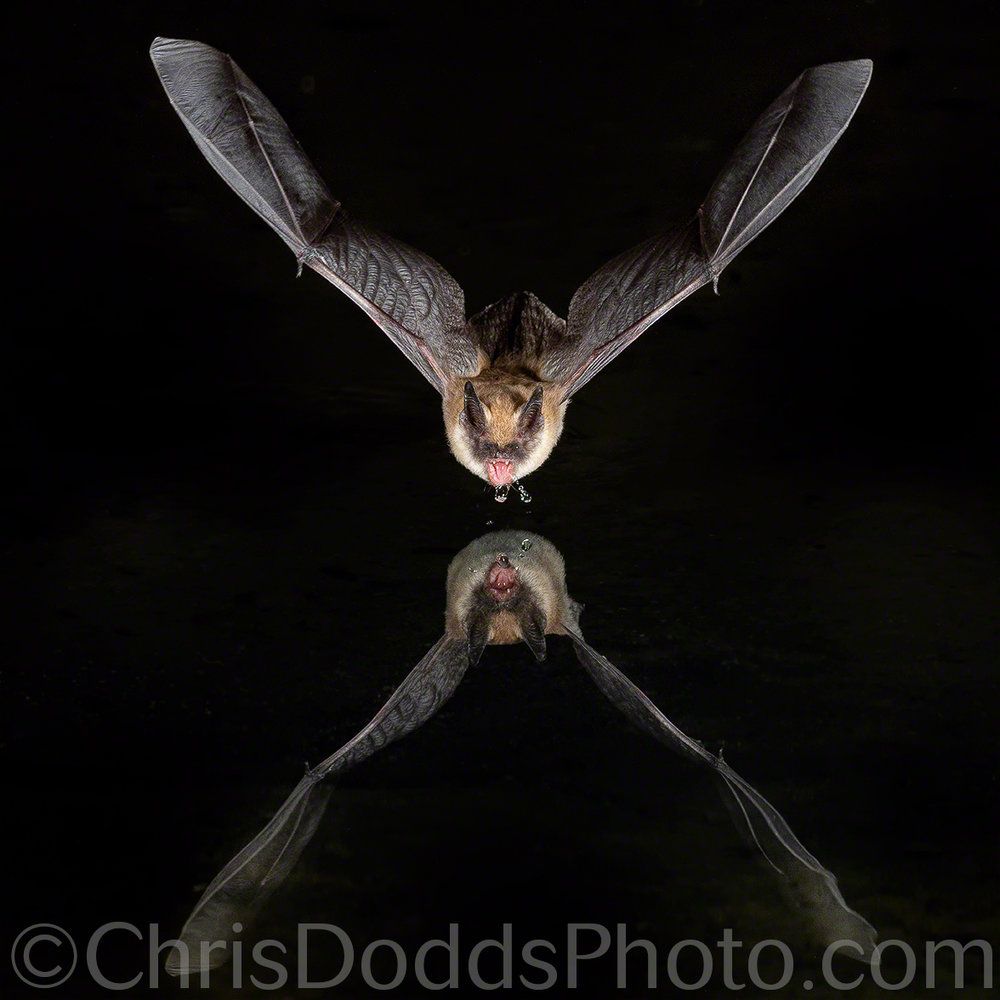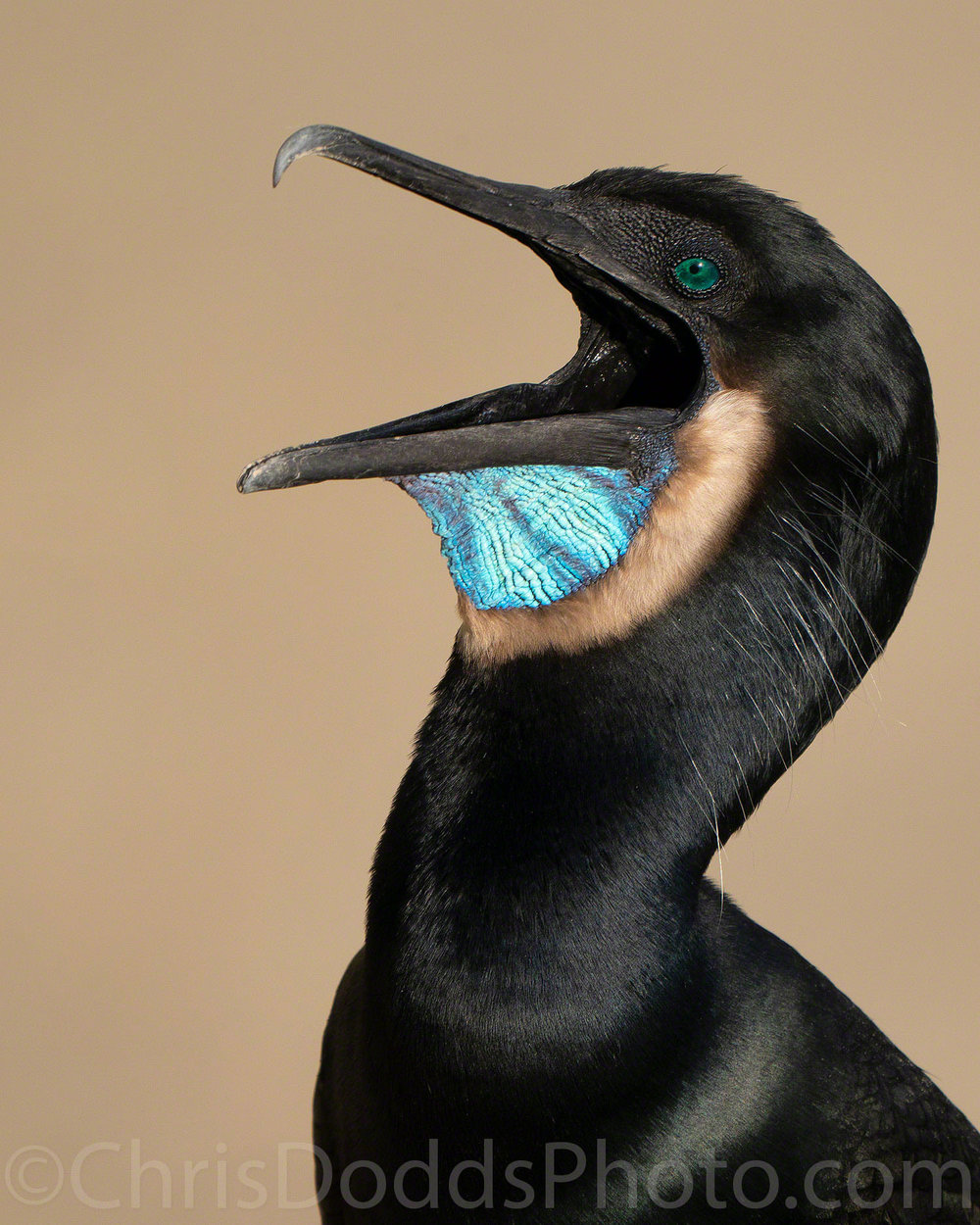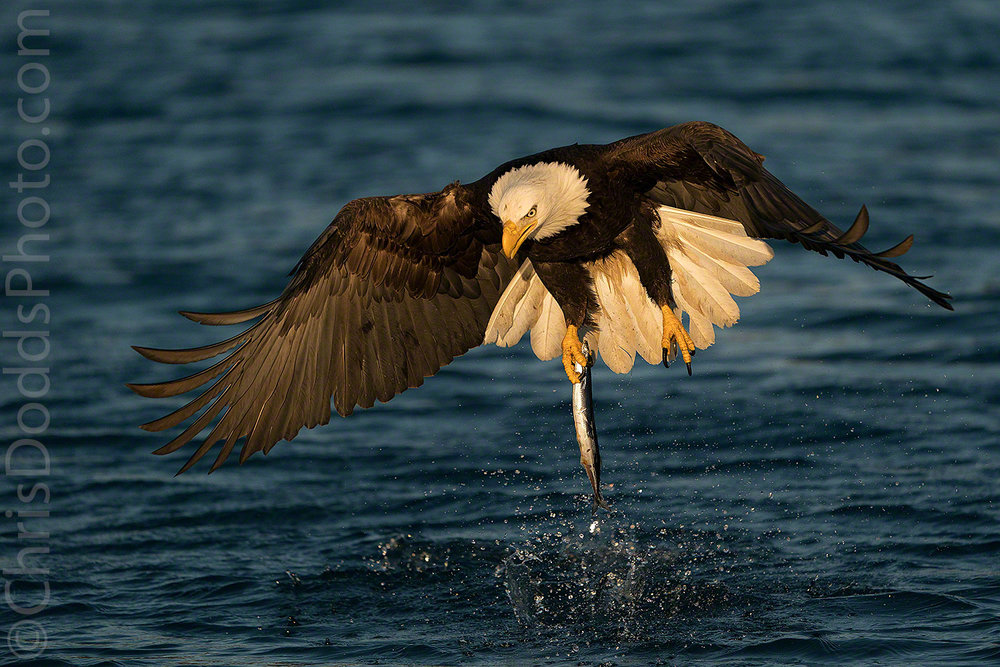 Long-eared Myotis Drinking from a pond in the desert Amado, Arizona, USA. Image Copyright ©Christopher Dodds. Sony Alpha a9 Mirrorless camera & Sony FE 200-600mm f/5.6-6.3 G OSS Lens @600mm ISO 800, f/16 @ 20s Manual exposure. Full Frame.
Long-eared Myotis Drinking from a pond in the desert Amado, Arizona, USA. Image Copyright ©Christopher Dodds. Sony Alpha a9 Mirrorless camera & Sony FE 200-600mm f/5.6-6.3 G OSS Lens @600mm ISO 800, f/16 @ 20s Manual exposure. Full Frame.
I'm just back from my bat photography workshop in Arizona. The monsoon season had an early start which dispersed the local bat population to the many available water sources, but we still had fun and got some remarkable images.
In it's simplest form, we set-up our cameras on tripods at the edge of a pond and focused on the plane of the infra-red beam which triggered the flash when it was broken. The ultra-short duration of the flash illuminated our subjects and froze them in flight. The cameras were set to make continuous 20-second exposures at f/16 ISO 800. At the end of the night, there were a ton of black frames with no bats, but when a bat flew through and broke the beam, the flash fired and we were rewarded with some pretty remarkable images.
Do consider joining me in Arizona next September for my annual High-speed bat photography workshop. CLICK HERE to learn more.


